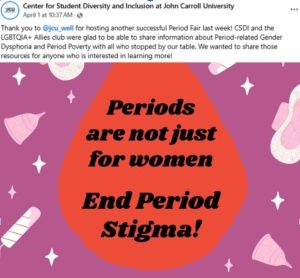Editorial: Covington Catholic Incident Shows Ugly Side of America
Jan 24, 2019
Originally published 1/24/19
This past Friday, a short video surfaced showing a Native American man chanting and playing a drum in the midst of a group of teenagers, many of whom sported red MAGA hats. Based on this brief clip, many concluded that the teenagers — identified as March for Life attendees from Covington Catholic High School in Kentucky — were behaving disrespectfully and even mockingly towards the chanting man, identified as Omaha elder Nathan Phillips.
Almost immediately, the internet exploded. Twitter abounded with condemnations of the boys and their alleged behavior, from liberals and conservatives alike. Their school and the Diocese of Covington quickly turned on the students, issuing a joint statement denouncing the group and threatening possible expulsion.
By Sunday, it became clear that almost everyone had misinterpreted the situation. Longer videos surfaced, providing over an hour and 45 minutes of context to the brief clip that went viral on Friday. Reason’s Robby Soave provided the first major analysis of the situation. Long before Phillips arrived on the scene, videos show the boys being yelled at by members of an apparent extremist branch of the Black Hebrew Israelites movement. Among other things, this group called the boys “incest babies,” “child-molesting f*ggots,” “future school shooters” and “dirty-a** little crackers.”
Eventually, the boys decided to take up a school chant in an attempt to disengage and drown out the attacks from the Black Hebrew Israelites. After they had been chanting for a few minutes, Nathan Phillips — who had been in the area for a small Indigenous People’s March concurrent with the March for Life — approached their group playing his drum and singing the American Indian Movement song. For unknown reasons, Phillips singled out one boy — later identified as Covington junior Nick Sandmann — and approached him, singing and playing just inches away from his face. This is where the shorter clip picked up, showing Sandmann standing still and smiling uncomfortably, while some of the boys continued the school chant and others questioned what Phillips was doing.
After the incident, Phillips quickly went on national TV, calling the young students “beasts” and claiming that the hateful extremists were their “prey.” He claimed that he had been surrounded by the Covington Catholic group and prevented from leaving when he attempted to defuse the situation. Video evidence has shifted the initial tone of the debate and caused people to reevaluate their harsh reaction towards the students. Footage from multiple angles shows him deliberately approaching the students and does not show any effort by them or anyone else to entrap him.
The details of Phillips’ account and his characterization of the boys’ behavior is refuted by the available evidence. In light of the new information, many of the public figures who had so quickly condemned the students offered retractions and apologies. But the damage had been done.
Students involved in the encounter have received countless death threats. Their parents, too, have been identified and threatened. Some of the responses on Twitter have been absolutely reprehensible, such as “A School shooting at Covington would be acceptable (@itsaaronyaknow)” and “LOCK THE KIDS IN THE SCHOOL AND BURN THAT B*TCH TO THE GROUND (@HouseShoes).” The second tweet, from a Los Angeles DJ, was determined by Twitter not to be in violation of any rules of conduct. The account that issued the first tweet is no longer in existence.
These examples are indicative of a broader national outrage at a false interpretation of Friday’s events. These teenagers received horrific treatment from a number of sources: first from the racist Black Hebrew Israelites who harassed them at the Lincoln Memorial, then from the school and diocese that hung them out to dry and finally from a public that jumped to judgments and conclusions without fully understanding the situation.
Even if the boys had behaved as these people initially thought, the threats and harassment would be entirely unacceptable. But the most important moral of this story is that people presented a misleading narrative to the media and the public, and practically everyone bought it. This incident demonstrates a failure of journalists to determine and present legitimate facts, and of the general population to discern the truth before acting or jumping to conclusions.
The video that surfaced Friday claiming to show America a terrible episode of hatred and prejudice did just that. But the question must be asked: did that hatred come from a group of high schoolers who attempted to weather attacks from hateful extremists, or from the people who demanded that those high schoolers be shot based on a two minute video clip?











